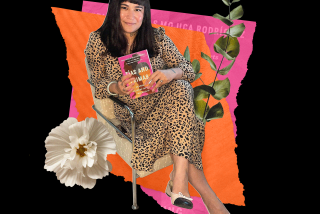Patricia Cardoso’s ‘Real Women Have Curves’ was landmark Latina cinema, but Hollywood shut her out. Until now
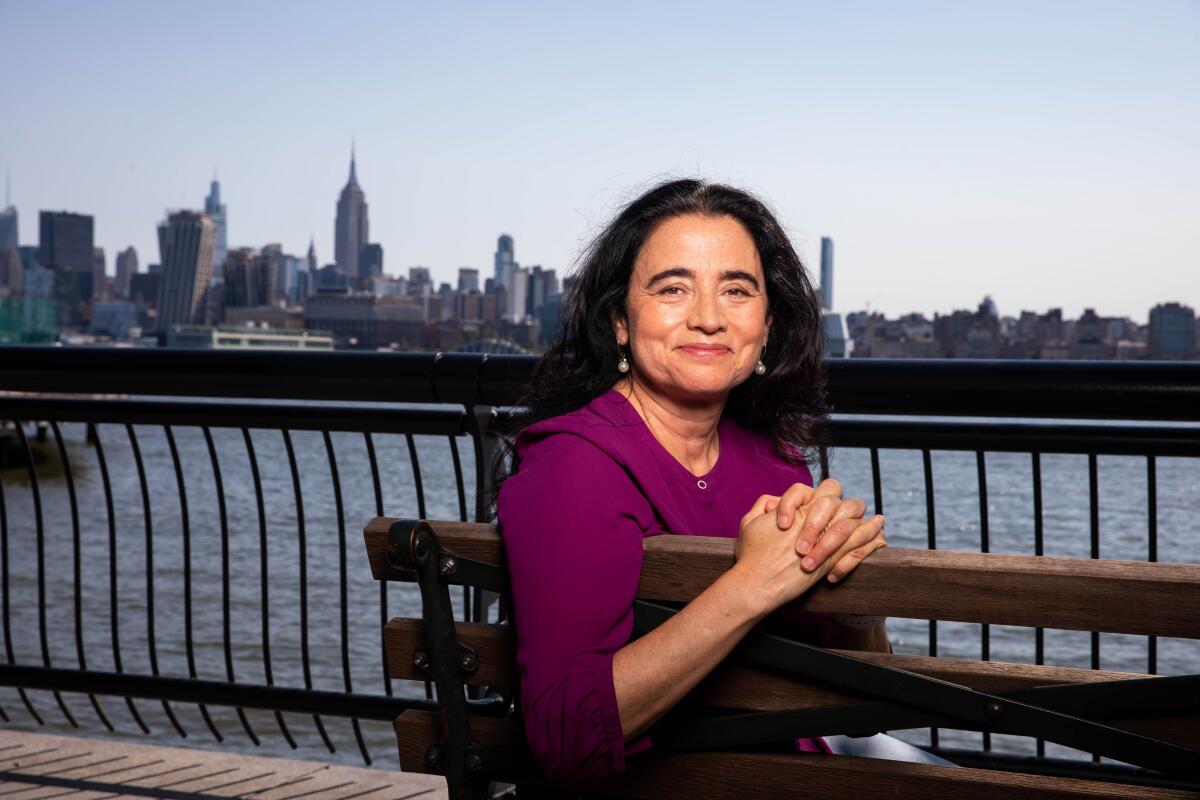
- Share via
Patricia Cardoso’s eyes brim with tears, and she says she might cry. Tucked inside a Zoom box against the backdrop of a white-walled office, she knits her brow, bites her lip and takes a deep breath before continuing with her story.
“I knew that movie was extraordinary,” she says of her groundbreaking 2002 film, “Real Women Have Curves,” which won the audience award at the Sundance Film Festival and went on to become the first Latina-directed film in the Library of Congress’ National Film Registry. “I knew I was an extraordinary director, but I couldn’t get a job, and I couldn’t make a living for years and years and years.”
Cardoso is taking a break on the New Jersey set of a pilot she is directing for a major streaming platform, although she is not yet at liberty to say what the project is or whom it is for. She does say that she has been making a living as a director for only about three years now, and that’s thanks to another woman of color — Ava DuVernay — hiring her to direct an episode of “Queen Sugar.”
“If she had not given me that chance, I probably would not be directing much,” Cardoso says.
A curatorial team of mostly women has surfaced the intriguing back stories and undertold contributions of women in filmmaking.
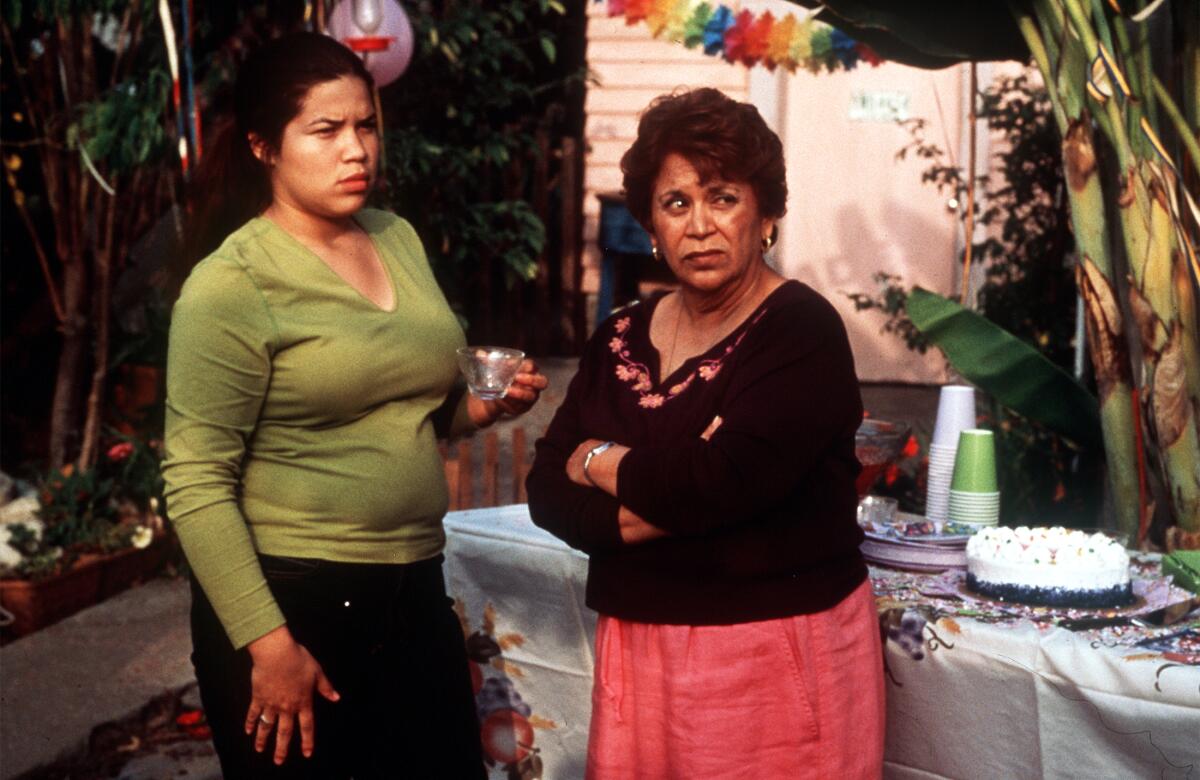
The statement, issued as a flat declaration of truth, is loaded with irony, coming from a Latina whose on-screen depiction of a Mexican American family nearly 20 years ago challenged Hollywood’s Latinx stereotypes, elevated conversations about body positivity among women and spotlighted the importance of cinematic representation of marginalized groups long before such conversations worked their way into studio boardrooms.
The singular importance of “Real Women Have Curves,” and Cardoso’s contribution to the film canon, are getting some long-overdue recognition as part of an exhibit in the Significant Movies and Movie Makers gallery at the Academy Museum of Motion Pictures, opening Sept. 30. Cardoso’s film is in a prime spot, featured between Orson Welles’ “Citizen Kane” and Thelma Schoonmaker, who has edited Martin Scorsese’s films for more than 50 years.
Notably, the “Real Women Have Curves” vignette is the only one in the gallery that is featured in full color, with an entire wall devoted to a close-up photograph of the film’s stars, America Ferrera and Lupe Ontiveros, whose combative daughter-mother relationship serves as the film’s emotional anchor.
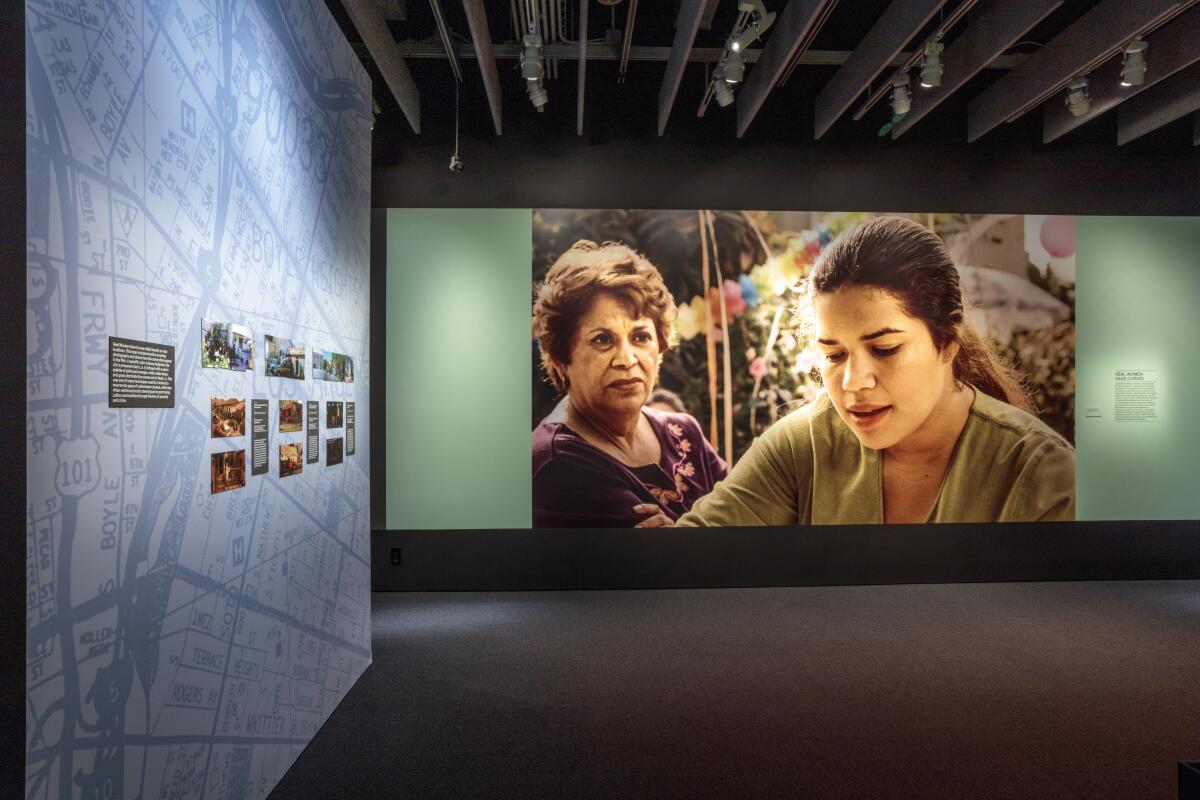
“I wanted this to stand out as the hero object of the gallery,” says Sophia Serrano, the assistant curator who spearheaded the “Real Women” vignette. “Everything else is black-and-white and sepia.”
The choice is also a tender nod to Ontiveros, a beloved Latina actress who appeared in nearly a hundred films and TV shows over her 35-year career but was excluded from the Oscars’ 2013 “In Memoriam” reel honoring significant actors who had died — a snub that resulted in protests at the Academy of Motion Picture Arts and Sciences headquarters.
In “Real Women Have Curves,” Ontiveros plays Carmen, a seamstress in her oldest daughter’s textile factory and the martyred matriarch of a hardworking immigrant family. Her husband, Raúl, played by Jorge Cervera Jr., is a gardener, and her youngest daughter, Ana, played by Ferrera, is an excellent student who earns a full scholarship to attend Columbia University. Carmen forbids Ana to go to college out of state and instead brings her to work in the factory.
The film’s most memorable moment happens on a sweltering afternoon when Ana, laboring over a hot iron, takes off her shirt in the factory. The other female workers follow suit, and soon the women are joyfully comparing stretch marks and cellulite while Carmen seethes.
“That moment in that film is more crucial to some people than ‘Citizen Kane’ will ever be,” says assistant curator Dara Jaffe. “It’s all about perspective.”
Jaffe notes that when the curators decided which people and films to include in the Significant Movies and Movie Makers gallery, “We were constantly asking the question: ‘Significant to whom?’ Because that answer will vary a lot, and we wanted to make sure we represented as many groups as we could.”
It is certainly significant to Cardoso, whose eyes light up when she talks about donating the film’s script notes, casting calls, storyboards, production stills, location scouting photos and design drawings to the academy’s Margaret Herrick Library as part of the Patricia Cardoso Papers. This will make her work a public resource and allow the curators to resurface various parts of it in future exhibits.
“It feels incredibly powerful,” Cardoso says of her part in the museum. “It’s so important for our community to grow up seeing images of people like them — to have role models. It’s so detrimental to not see yourself with dignity and respect.”
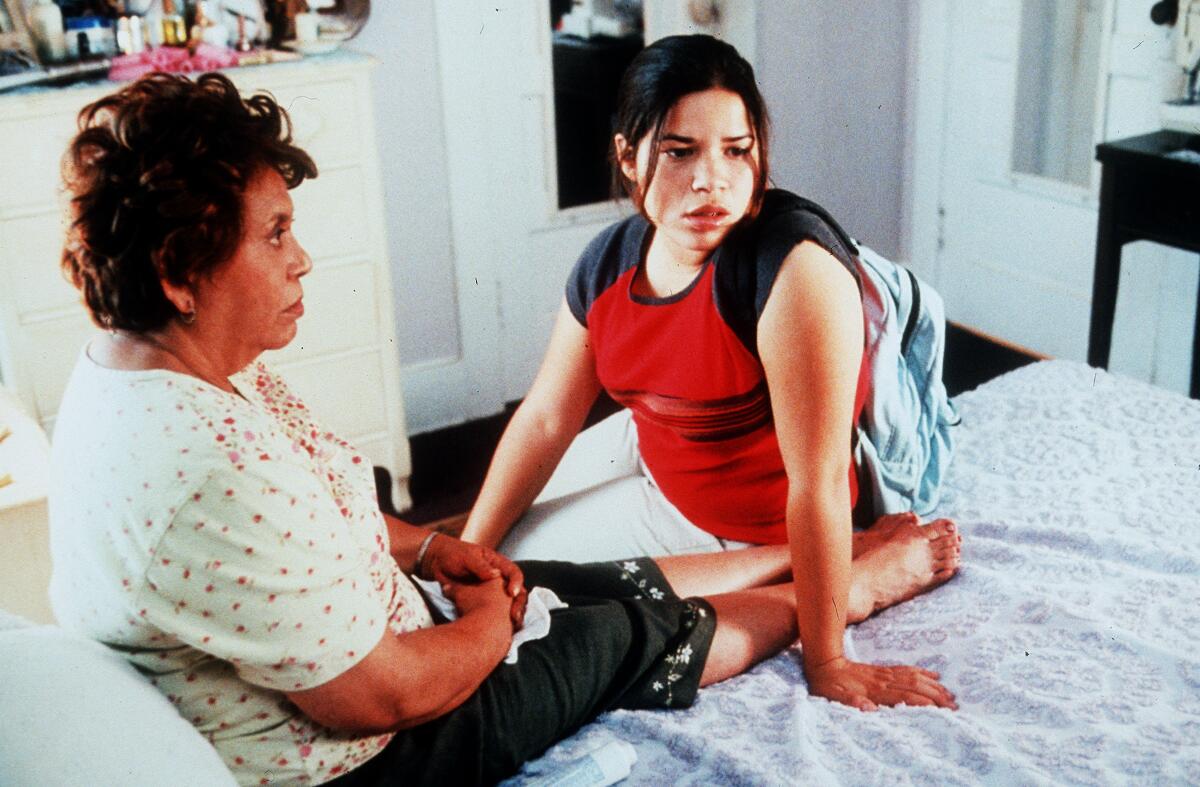
Cardoso believed there was something wrong with her during the 15-plus years when she could not get work as a film director. She lived on the edge from day to day, month to month, worrying that she might lose her house. When her son was a Cub Scout and the troop went to a homeless shelter in Santa Monica to hand out food, she remembers looking around and thinking, “If worse came to worse, this is where I would be, and this is OK.”
But then she started talking to other female directors and realized that they had all gone through the same thing.
“And we had all internalized it,” Cardoso says. “We thought it was our fault and that we’re not good enough.”
She finally lugged her many awards out of her garage and placed them on shelves in her house. She also pinned a pie chart to her bulletin board that showed the razor-thin slice of female directors in the business, and the vanishing number of women of color in that role.
She surrounded herself with mementos to her talent as a reality check — to remind herself that “You’re good at this. It’s just the world is not a fair place yet.”
The sentiment is echoed by co-screenwriter Josefina López, who wrote the play on which the film is based. After the success of “Real Women,” she says, she mistakenly thought, “Oh, wow, I’m probably going to have a career now.”
“You would think that I would have gotten another movie made. And no, it hasn’t happened because that movie was made by an independent producer outside of the Hollywood system. ... So that movie got made no thanks to Hollywood.”
The world Cardoso depicted in “Real Women Have Curves” is not a fair place either, but the hardships it unearths are illuminated with loving care, thanks to the help of extraordinary women including production designer Brigitte Broch (“Amores Perros”) and producer Effie Brown.
Boyle Heights, often shown on-screen as an impoverished L.A. enclave filled with violence and gangs, was instead revealed as a community of hard-working families, filled with colorful murals, mouthwatering food and infectious music. Cardoso imbued the sets with warmth and color — painting Ana’s house pink and adding bright flowers and greenery to the yard. When she filmed the wealthy houses in West L.A. she used cold gray and blue.
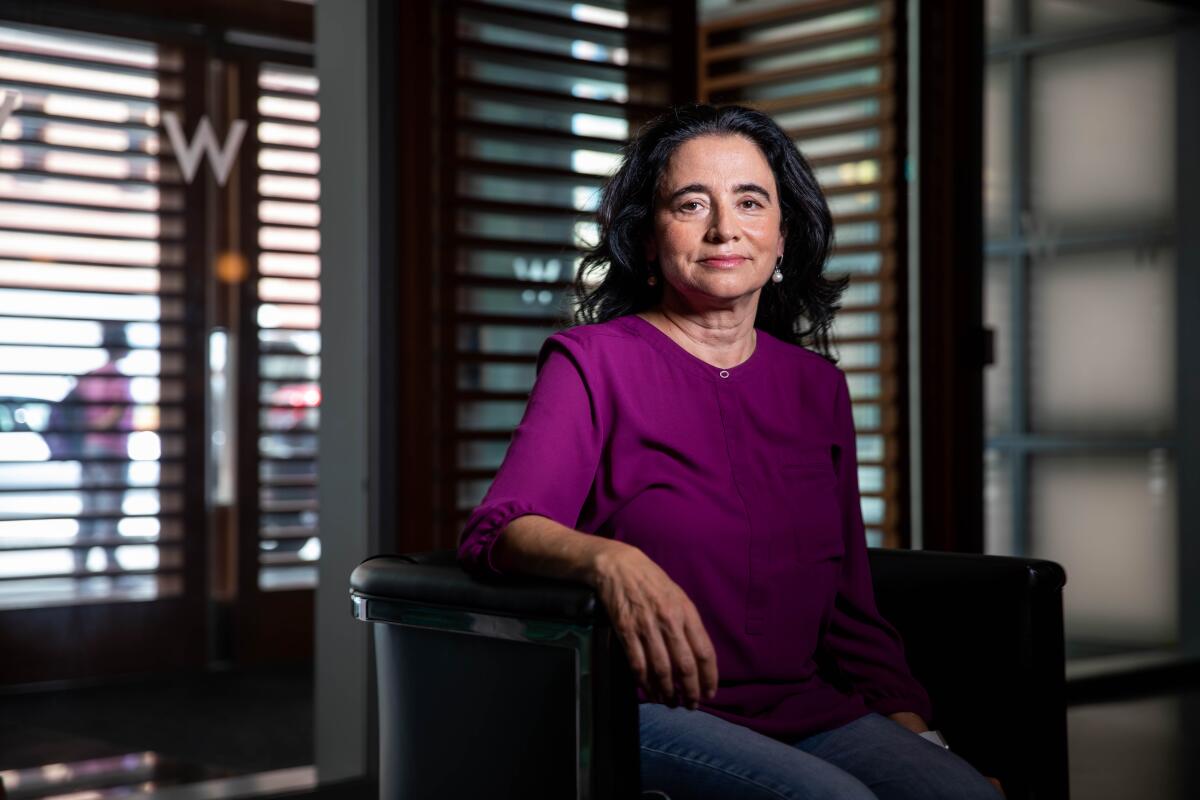
Cardoso grew up in Colombia, where she earned an undergraduate degree in anthropology. She moved to L.A. for graduate school at UCLA, where she studied film. When she began work on “Real Women,” which was HBO Films’ first domestic release, she spent six months exploring Boyle Heights daily.
“I was aware that we as Latinx people were not portrayed in our full experiences,” Cardoso says. “And in East L.A., I always saw beauty.”
When she was interviewing cinematographers, one candidate said he wanted to make sure that the textile factory looked like a dangerous sweatshop. She didn’t call him back. The crew she eventually hired saw the same beauty as Cardoso in the ebb and flow of life in the neighborhood and in the dignity of the work that its residents engaged in.
“The chain-link fences overgrown with flowers!” Cardoso exclaims. “To me that is beautiful!”
Cardoso’s understanding of cultural nuance and her desire to elevate marginalized groups led her quite naturally from anthropology to filmmaking. She ultimately chose to pursue the latter because she wanted the widest possible audience. After more than a decade of heartache and frustration, she is finally on the path to recognizing that goal.
“I am an artist, but I’m not thinking that I’m for a small group of people,” she says. “No, I want the entire world to see my stories.”
Times staff writer Julia Barajas contributed to this report.
The Academy Museum of Motion Pictures has opened as the ultimate celebration of Hollywood history, Oscar lore and today’s movie makers.
More to Read
The biggest entertainment stories
Get our big stories about Hollywood, film, television, music, arts, culture and more right in your inbox as soon as they publish.
You may occasionally receive promotional content from the Los Angeles Times.



